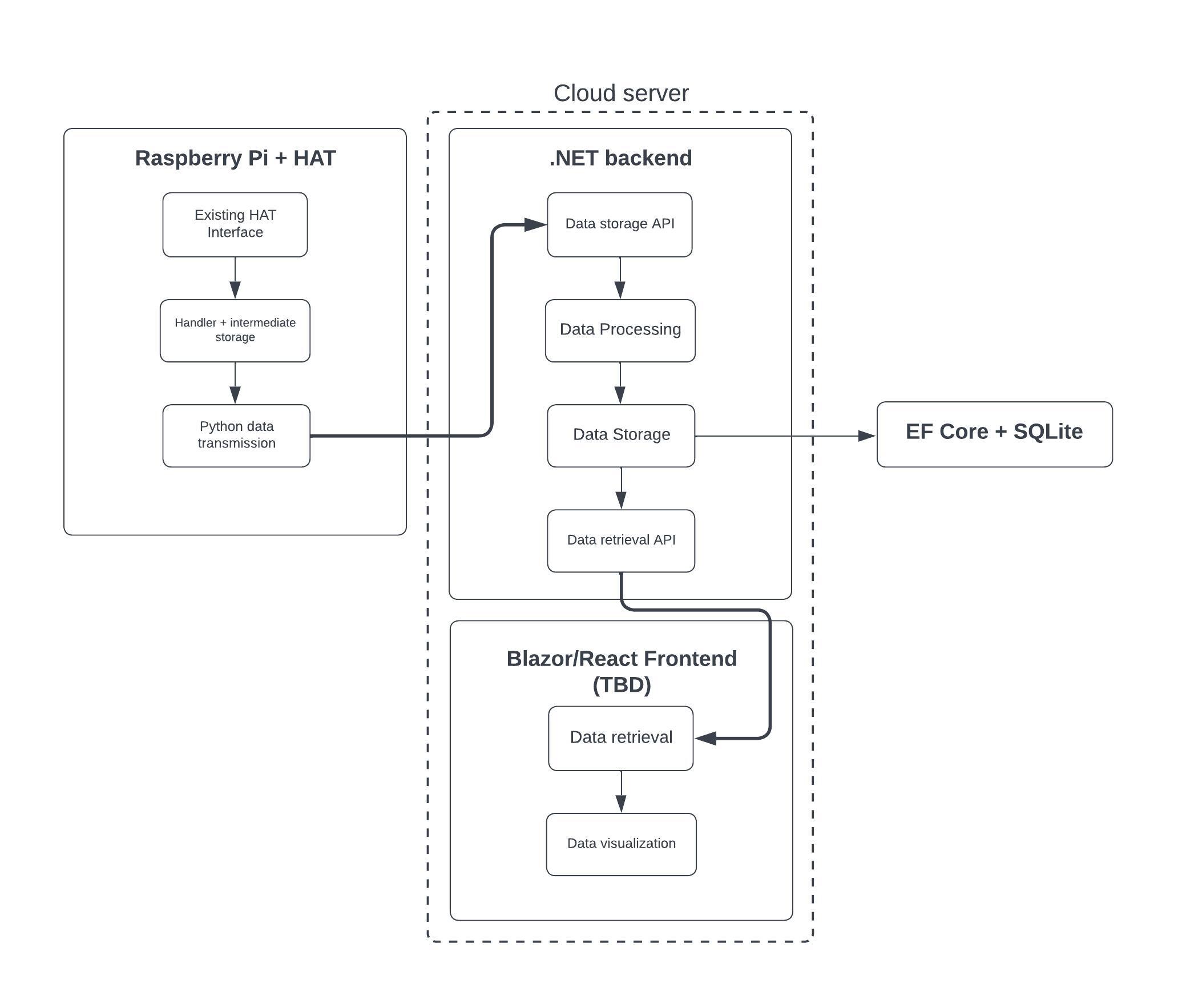..
frej2: high-level architecture
Defining a specific architecture before actually starting development is difficult due to my inexperience with the tools in question. However, I need to have something to work with, so I will simply let everything be subject to change. Thinking about the high-level structure causes the project itself to become clearer and creates a natural order in which to proceed.
I have used Lucidchart to create the flow chart shown below.

High-Level Architecture
Raspberry Pi + HAT
- Existing HAT Interface: Retrieves environmental data by interfacing with the HAT.
- Handler + Intermediate Storage: Python handler stores the data temporarily before sending it to the server.
- Python Data Transmission: Transmits data to the backend API for permanent storage.
.NET Backend
- Data Storage API: Protected API for the Raspberry Pi to access.
- Data Processing: Processes the data to store it.
- Data Storage: Interfaces with EF Core ORM and SQLite.
- Data Retrieval API: API for the frontend to access the data.
Blazor/React Frontend (TBD)
- Data Retrieval: Accesses the .NET API to retrieve data.
- Data Visualization: Visualizes data and allows for user interaction.
Next Steps
- Identify Project Objectives: More specifically define the specific objectives and goals of the project.
- Purpose and Motivation: Explain the purpose of the project and the motivation behind choosing the tools and technologies above.
- Project Plan: Outline the order in which the project will be undertaken, detailing the steps and milestones.